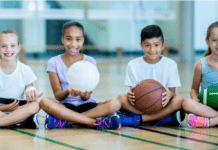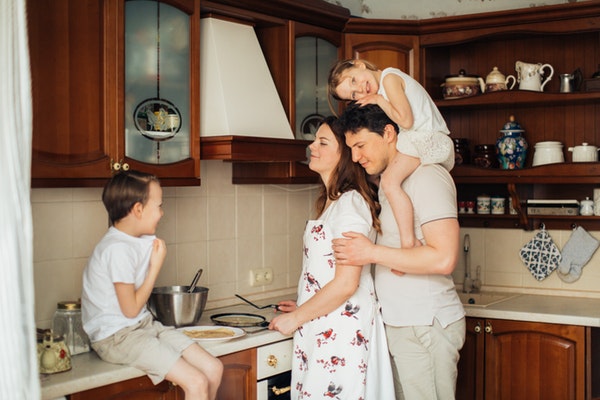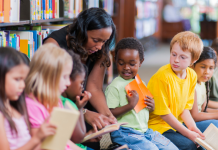We in the United States have watched as the world has reacted as the novel coronavirus (COVID-19) has spread from country to country, causing unprecedented shutdowns and health crises. Admittedly, our geography has historically spared us from many diseases that significantly affect other countries until now, but thanks to an ever-increasing global society where travel is both a necessity and privilege, our turn in the hot seat has come. We are seeing daily the epidemic’s impact on our daily lives — socially, physically, and financially.
Here in Tennessee, our diagnosed cases as of March 11 reached a total of nine — six of those were Middle Tennessee residents, prompting massive school closures, preparations for potential online learning, and abrupt cancellations of sporting events and college coursework. If you’re like me, your kids had a lot of questions to field (and misinformation to dispel) at pickup. In a time of confusion, fear, and panic, we must choose wisely how we talk to our children about what is happening around us right now and in the coming days.
Get your head right and calm before you start the conversation.
Our children are far more perceptive than we give them credit for being; they hear us talking about the “adult” things and listen to the broadcasts in our homes. Chances are, they have heard all sorts of crazy information from friends at school or unreliable YouTube channels. Like any other important conversation with your children, it is essential that you are their most accurate and level-headed source of information. They’re likely not reassured by your ever-growing stockpile of hand sanitizer and toilet paper. Rather, they want to see a parent who is rooted in information and reason rather than fear. Are we living in scary and unprecedented times? Absolutely. But our job as parents is to provide a stable, grounding presence in times of uncertainty. On the other hand, being overly-dismissive isn’t helpful either. Whether you personally are taking the virus seriously or not, the rest of society is. Entire industries are forgoing millions of dollars to promote social distancing and keep others safe, and using a flippant narrative directly contradicts what they see happening around them — making for some serious cognitive dissonance.
Start the conversation by asking them what their questions are.
As a former educator, I never taught a lesson without getting some intel on what my students already know. That way, I can focus my energy on dispelling inaccurate information and plugging the gaps in understanding. It was much the same way with my two children last night. After the celebrations of an extended Spring Break waned, I knew we needed to talk about the possibility of them not returning from the break. I began by asking them what they had heard already; the good news is that their teachers had hand-washing and proper sneezing and coughing techniques completely covered (thank you, teachers)! The downside: they had no idea what was going on. One thought he was getting out of school because a student there was diagnosed with it (factually untrue). Neither knew much more than that or seemed to understand why precautions of this scale were taking place. From there, I knew how to guide the conversation.
Give accurate information.
I’ve never sugarcoated hard topics in our house; we have always used the anatomically-correct words to talk about our bodies, and we don’t shy away from conversations about racism, bullying, or other injustices they may witness. This isn’t changing for this topic either. My highly-inquisitive son (who is on the spectrum and appreciates direct answers) asked me pointedly about who was affected – could he get it? Probably not. Could I? Possibly. Could our dogs? No. Could people die? Yes, in some cases. I gave him the facts that he needed because for him, he needs factual information to feel safe. My younger daughter, on the other hand, didn’t have as many questions, and so I tailored our conversation to what she seemed to need to know – that we are prepared and have plenty of food if we need to stay at home for an extended period of time. Reassure them about how you have prepared for this and that you have what is needed to weather this particular storm, just like you do with your family conversations about severe weather or fires. Information is powerful, and it’s the solid foundation for our kids’ mental stability.
Frame this as an opportunity to grow closer together as a family.
I will admit that I didn’t really know how to approach these conversations with my kids because honestly, my mind is still grappling with this reality on an hour-to-hour basis as news constantly changes and unfolds. Luckily, I saw a post from my dear friend from college, Chang Cane Rhiu, who is a principal at Three Kings Education and father of two young boys (10 and 8) in Seoul, South Korea. He posted recently that despite the chaos of country-wide shutdowns, he had spent the past several weeks at home with his wife and boys teaching one to ride a bike and the other to conquer his fear of going underwater. He posted videos of them playing lovingly in wide open fields (masks still on) and of spending time together as a family. In that moment, I appreciated his perspective in extending this as an opportunity to grow closer together. Sure, there will be plenty of screen time and video games – but we have a unique chance to truly spend quality time together as a family that distractions or obligations might otherwise rob us of this opportunity.
I asked him how this has changed their family dynamic, and he said, “We started appreciating small and ordinary things such as going to school, grocery shopping, riding bicycles, and most of all, we appreciate each other more than ever.” His encouragement for us Americans just starting to comes to term with our immediate futures is this: “It will be a long-term battle. Through this virus crisis, I realized how we have been so busy and stressed [trying] to be better than others. We have been living in a very comparative world. But now, everyone has to stop — and it’s not by our own choice. It gives us the needed rest to think of others and family. I suggest to make a family bucket list. It could be something small and ordinary , add things you haven’t done because you were too busy. That gives people an incentive to stay focused and punctual. After three weeks of self-isolation, time seems meaningless. Set the daily schedule, and follow it faithfully.”
Chang’s perspective and wisdom has given me grounding and guidance in this uncertain time. Instead of imagining my family all crawling the walls out of boredom and stir-craziness, I’m choosing to channel his example by finding ways to make this unfortunate situation meaningful for all of us.
Talk about the importance of social distancing.
I get it – no one is thrilled about missing March Madness, work, school, or sports activities. If I’m being honest, I’m racking my brain thinking of activities for us to do as a family that don’t involve public areas such as parks or trampoline centers. But to mitigate the impact of this virus, social distancing is key. We are all going to feel the frustration, but it’s up to us as the leaders in our homes on how we handle that narrative. For me personally, I’m talking about the importance of community – which seems ironic considering we are being encouraged not to be together publicly. However, it’s our responsibility to care for everyone in our community, not just ourselves who may or may not be at high risk for the worst of this virus. We have a responsibility to the grandparents in our neighborhood, our friends battling cancer and other immuno-suppressing conditions, and the most vulnerable around us to act responsibly.
I’m pointing my kids toward what we have seen in Nashville the past week since a devastating tornado ravaged our community and the ones around us. Neighbors have sacrificed time and again to care for one another — especially our most vulnerable — because that’s just what we do. We put aside our own schedules and needs to help those in life or death situations who desperately need it. This time, it’s not to sift through the remains of homes or to rebuild schools; it is to ensure that we stay alive and healthy so our hospitals and staff aren’t overburdened with patients. We take care of one another all the time, and this is just one other way that we can do that as a community.















This is 100% spot on. Thank you for this! I only have one child, 8 years old, but I love how you point out that information given must be tailored to the individual kid. It’s certainly not a “one size fits all” situation. (Btw, I’ve been asked if our dog could get it and/or if our dog could pass it to us).
It’s such a perfect opportunity to teach kids (and some adults alike) that this isn’t just about them, personally, not getting sick. It’s about taking care of the most vulnerable among us and that staying in is a big part of this.
Thank you and stay safe.